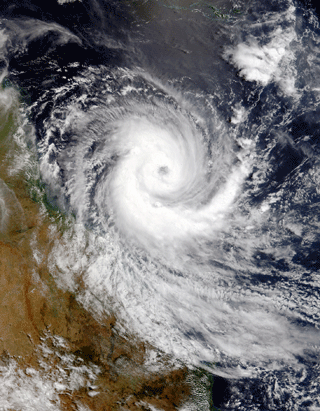
|
Published:
Shift happening as tropics relocate polewards
The Earth’s tropical zones are expanding, causing subtropical arid zones to extend into ‘Mediterranean’ temperate zones formerly characterised by wet, cold winters and hot, dry summers, according to James Cook University researchers.

|
|
If the tropics migrate polewards, severe events such as Cyclone Larry could hit large population centres further south. Credit: NASA
|
After reviewing 70 peer-reviewed scientific publications on climate and weather studies around the world, the researchers concluded that the climatic boundaries of the tropics have been extending to around 30 degrees latitude north and south of the equator – well beyond the 23.5 degree lines of latitude that historically defined the Tropics of Cancer and Capricorn.
The world’s temperate zones take in the heavily populated regions of southern Australia, southern Africa, the southern Europe–Mediterranean–Middle East region, the south-western United States, northern Mexico and southern South America.
While these areas could experience more droughts, the expansion of the tropical zone into former subtropical regions could result in heavier rainfall and flooding, with a possible poleward shift in the paths of extra-tropical and tropical cyclones over the next 100 years.
‘If the dry subtropics expand [polewards], the consequences could be devastating for water resources, natural ecosystems and agriculture, with potentially cascading environmental, social and health implications,’ commented review author Professor Steve Turton.
The tropics currently occupy approximately 40 per cent of the Earth’s land surface, are home to almost half of the world’s human population and account for more than 80 per cent of the Earth’s biodiversity.



